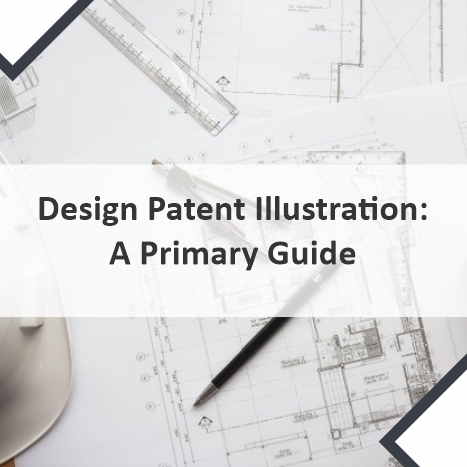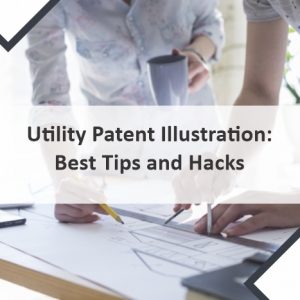Design Patent Illustration is a drawing that depicts the complete design of the invention. Furthermore, by complete design we mean, all the contours, shape, texture, size and proportion of the object. It strictly includes all the features visible during the use of the product/object.
Here comes a piece of advice- do not confuse design patent illustration with utility patent drawings. As a utility patent illustration/drawing gives a complete visual of the invention for which you are seeking patent protection. On the other hand, a design patent illustration specifically provides those ornamentations for which you are claiming patent protection. A design illustration is an important element of design patent application.
Finally, let’s move onto the important specifications of design patent illustration as per the guidelines of the USPTO.
Design Patent Illustration: Important Specifications
Although a design illustration is a complete replica of the original ornamentation on the article. But, there are a certain set of rules for construction of those designs for submitting them to the USPTO. Also, here is a crux of the detailed USPTO guide on design patent application–
Multiple Views:
Show as many views of the object’s design as possible. In short, provide images of top, front, bottom, back, left and right views. A number of views also depends upon the dimensions and type of object. Say, for example, if an object is thin and flat like a photo frame, then you require submitting only the front and the rear views. But, if there is peculiar ornamentation on the edges of the photo frame then submit the complete view along with the edges.
Consider adding sectional and exploded views of the designs to bring the peculiar features in light. Always link the exploded view to the full design.
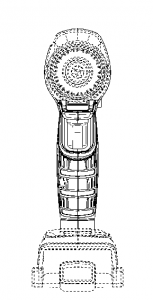
Figure 1- Front view
(Patent No. US3541976A)
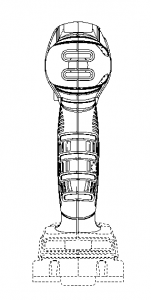
(Patent No. US3541976A)
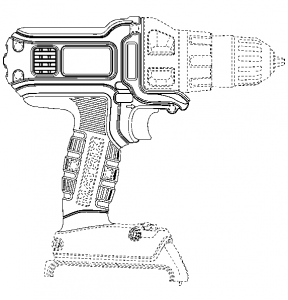
(Patent No. US3541976A)
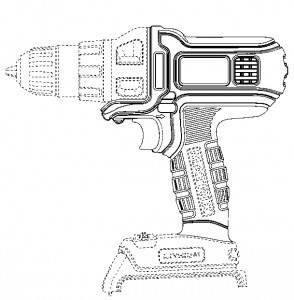
(Patent No. US3541976A)
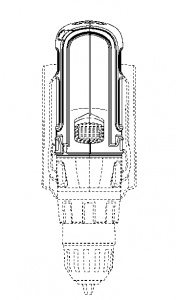
(Patent No. US3541976A)
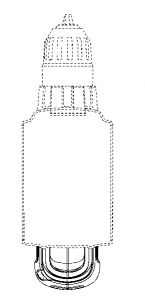
(Patent No. USD689355S1)
Ink Type and Photographs:
The USPTO accepts black ink and Indian ink for design drawings or black-and-white images in lieu of the drawings. At the same time, try not to include environmental structures and focus on the design itself.
Therefore, do not submit photographs along with drawings as there is a high probability of inconsistency between both.
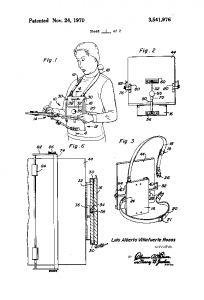
(Patent No. US3541976A)
Colour Drawings and Photographs:
Although generally not accepted, but color drawings can become a part of the patent applications if provided with reasons claiming their necessity. The color is essentially not a part of the claimed design. Moreover, PCT applications do not entertain color photographs or drawings.
Click Here to Download (Free Samples)
Surface Shading:
Enhance the surface characteristics of the illustration. It also helps in differentiating between open and opaque/solid areas of design. Also, perform black shading only when you represent the color black as well as color contrast.
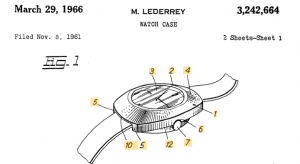
(Patent No. US3242664A)
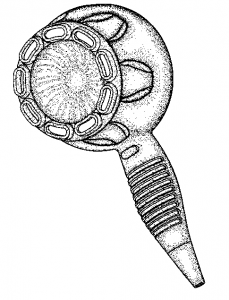
(Patent No. USD486264S1)
Broken Lines:
Is not a part of the claimed design but represent the background or environment structures. Additionally, if the claimed design is just the surface ornamentation on an article then represent the article with broken lines. This criterion is variable i.e. broken lines work for U.S. patent applications but not in some foreign countries, e.g. China.
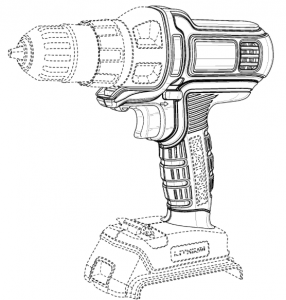
(Patent No. USD689355S1)
Important Elements of Design Patent Application
Just like utility patent application for design patents, one needs to bring certain documents required by the patent office (here, USPTO). Furthermore, these elements are of critical importance and are exclusive to design patent applications.
These include:
- Preamble: it consists of the name of the applicant, title of the design, a brief description of the intended use and nature of the article on which the design is present. The title of the design is specific and descriptive in nature. Moreover, it identifies the article by a generic name commonly used by people.
- Cross-reference: in this section, you tag or refer to any prior related application. In short, this helps in setting a priority date for the current application.
- Statement regarding federally sponsored research or development: some inventors take government support to come up with an invention. In this case, the government too has certain rights over the invention known as Government License Rights.
- Description of the figure(s) of the drawing: it gives a brief on what the different views of the design are like. Also, any other description about the design in the specifications is not necessary, as a drawing in itself is self-explanatory.
- A Single Claim: a design patent application comprises only one claim and defines the design to which it pertains.
- Drawings or Photographs: as explained previously drawings or photographs provide visual of the design to the examiner and public.
- Executed Oath or Declaration: oath and declaration of the applicant must comply with the rules put forth in 37 CFR §1.63.
What do we offer at The Patent Illustration Express?
A team of professional illustrators creating design and utility patent illustrations in compliance with the rules of the patent office is at your service. We ensure quick deliveries and free iterations (whenever needed). Our draftsmen with years of experience keep their knowledge and skillset updated with the new technology. And therefore, we meet the complexities of the patent drawings and deliver the best of the results. If you are looking for patent illustration service, do visit Patent Illustration Express.
Related Articles:
Online Patent Filing: The Major 7 Steps

